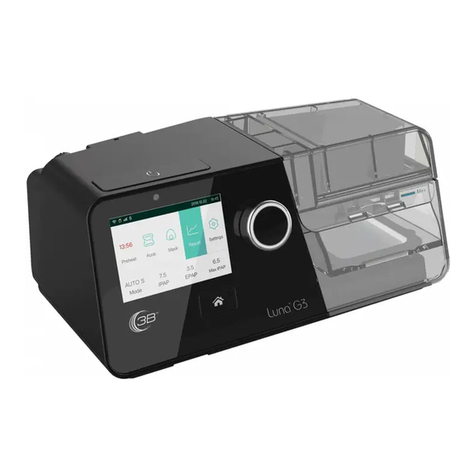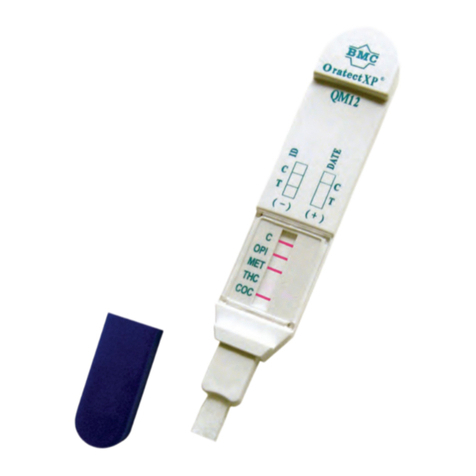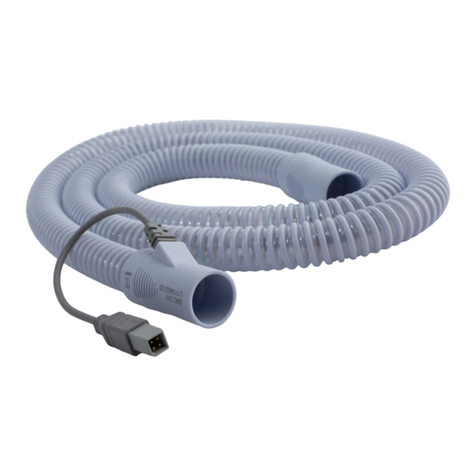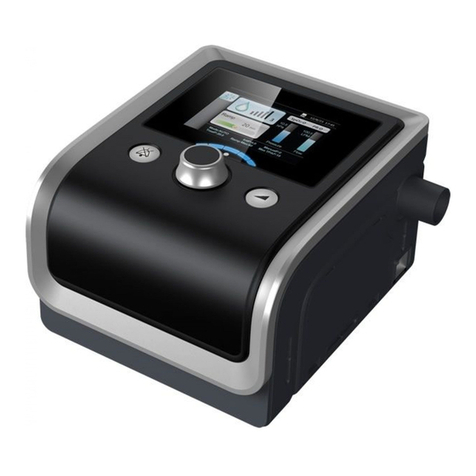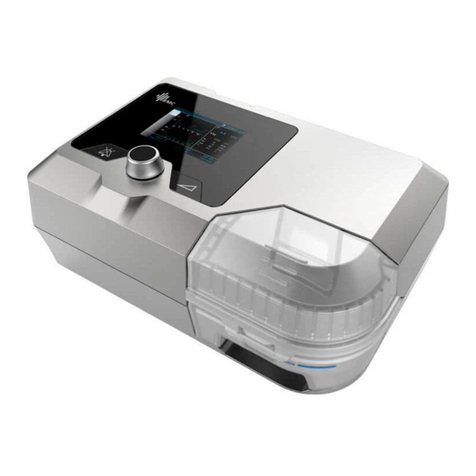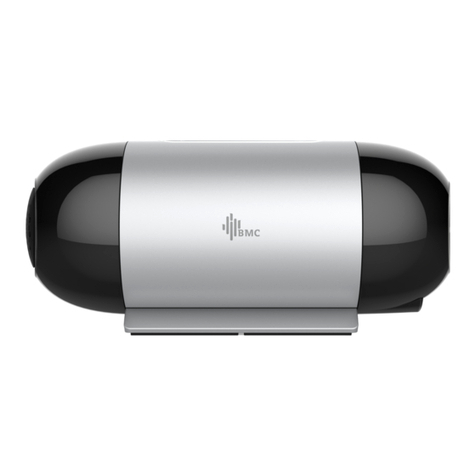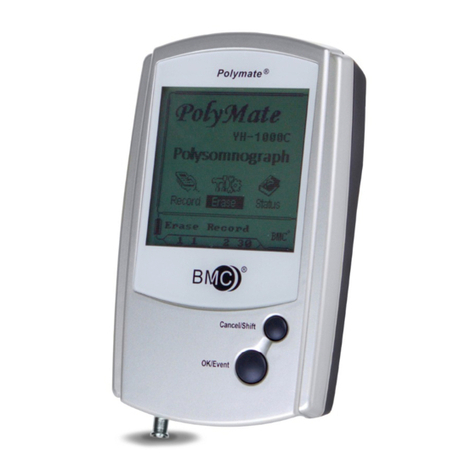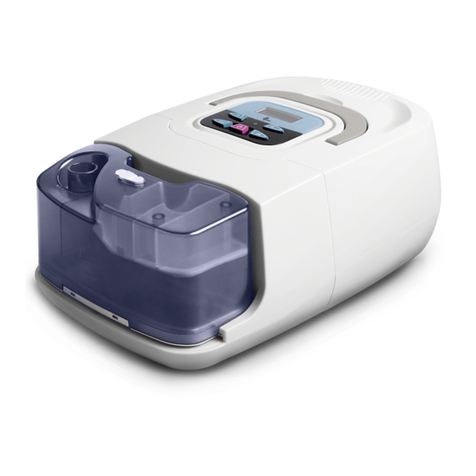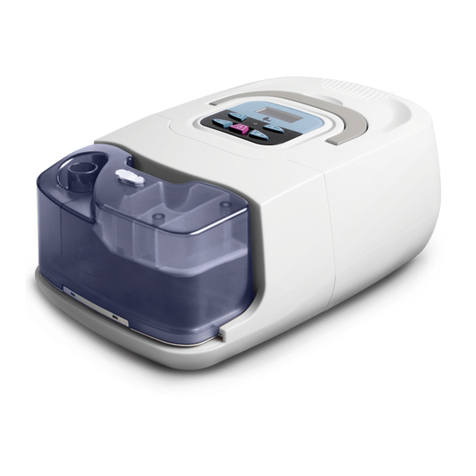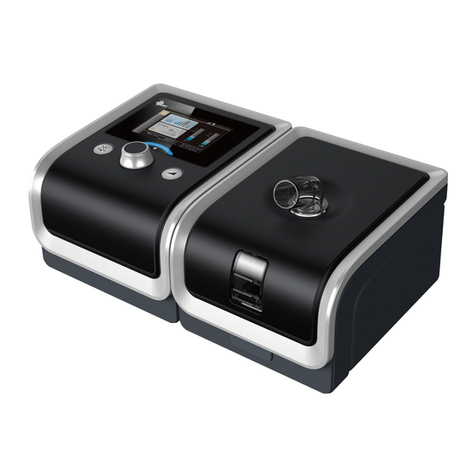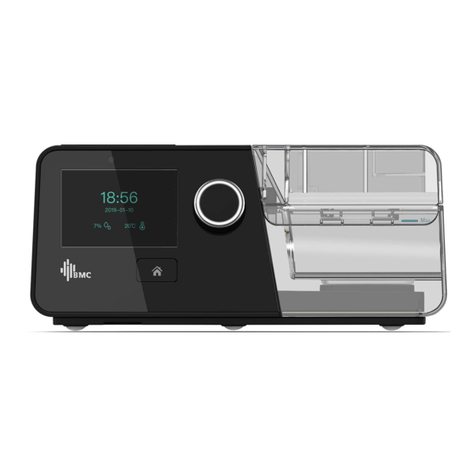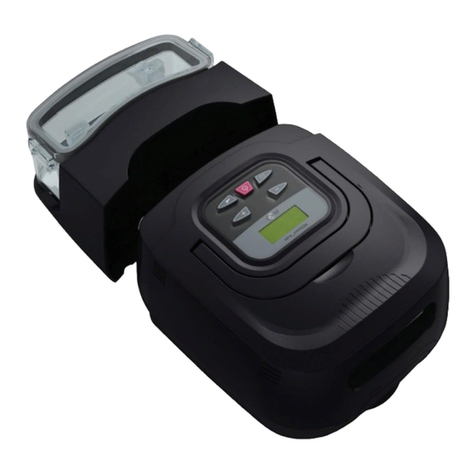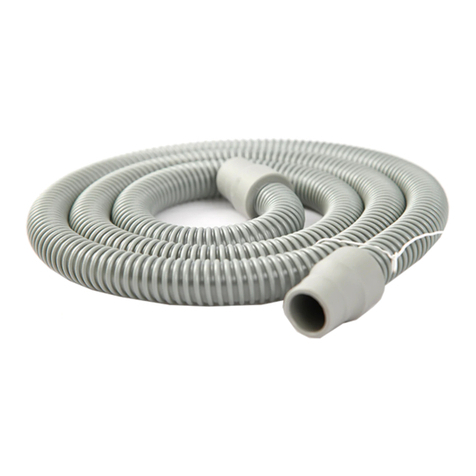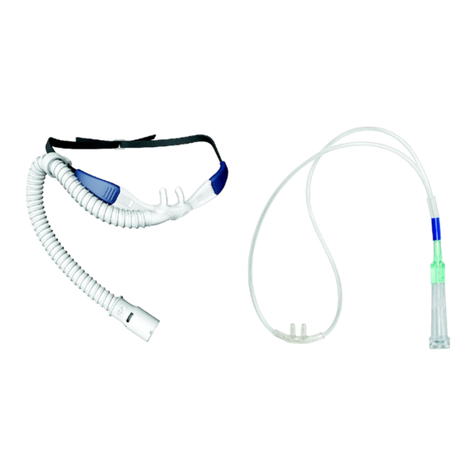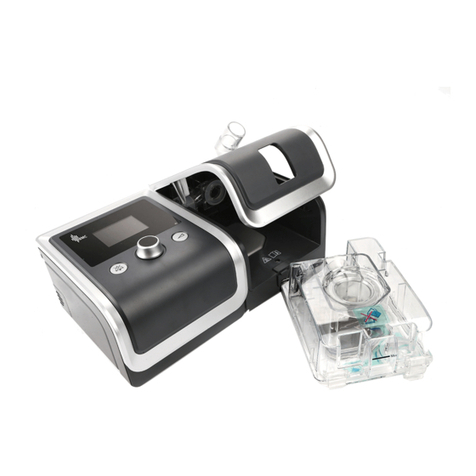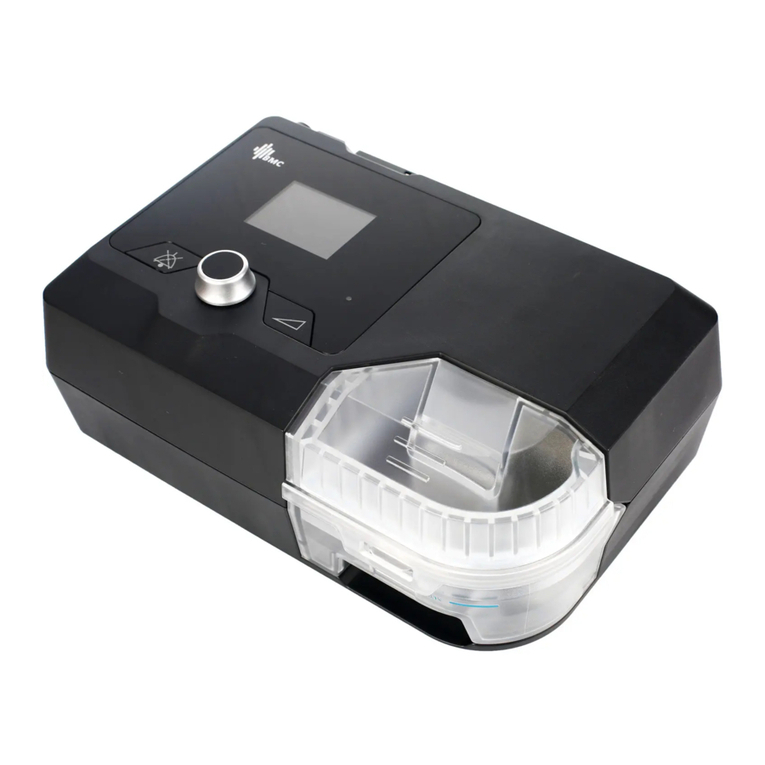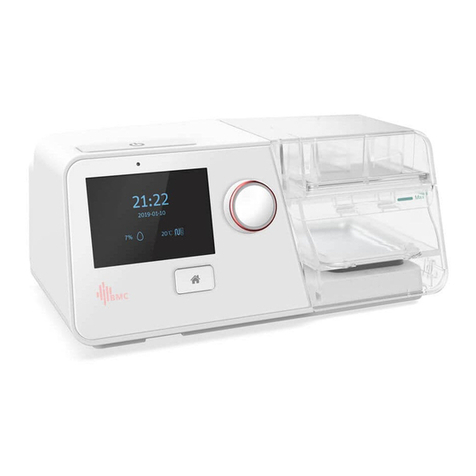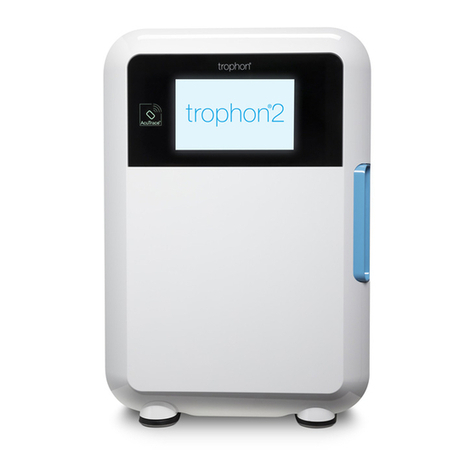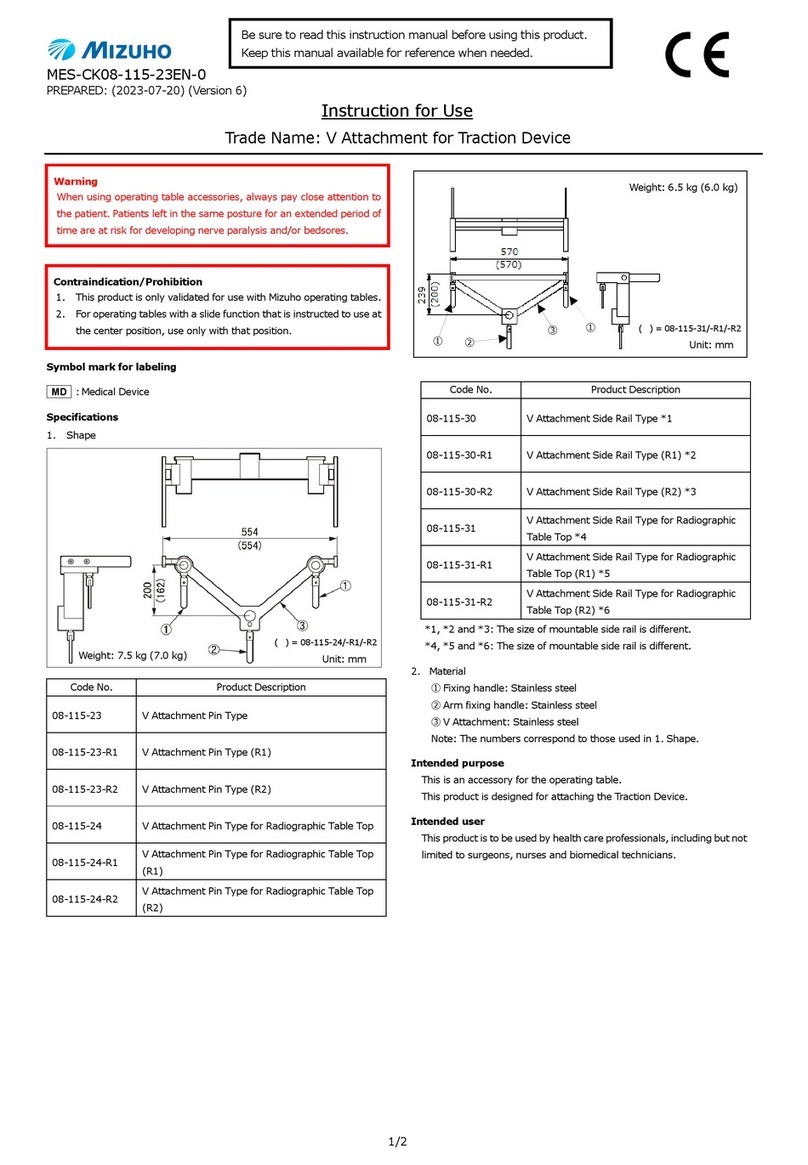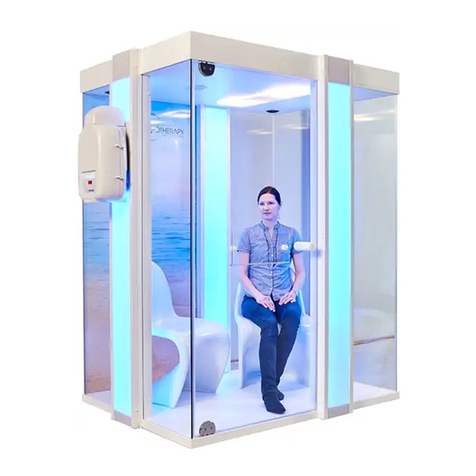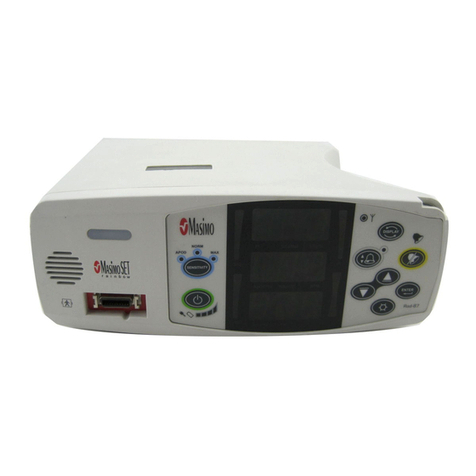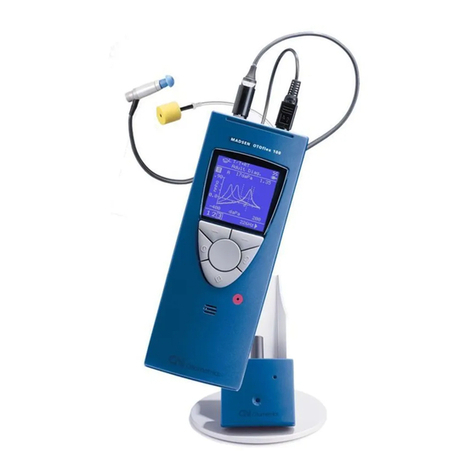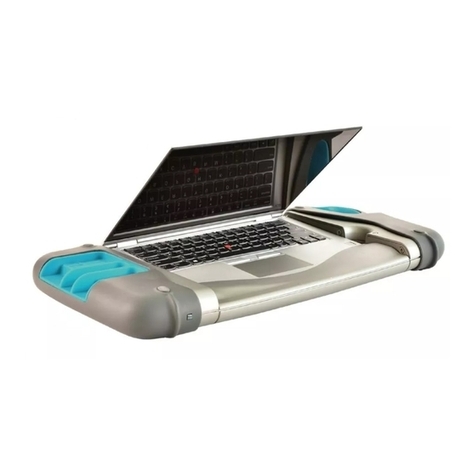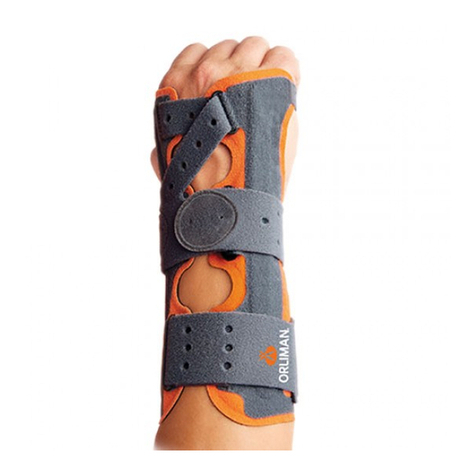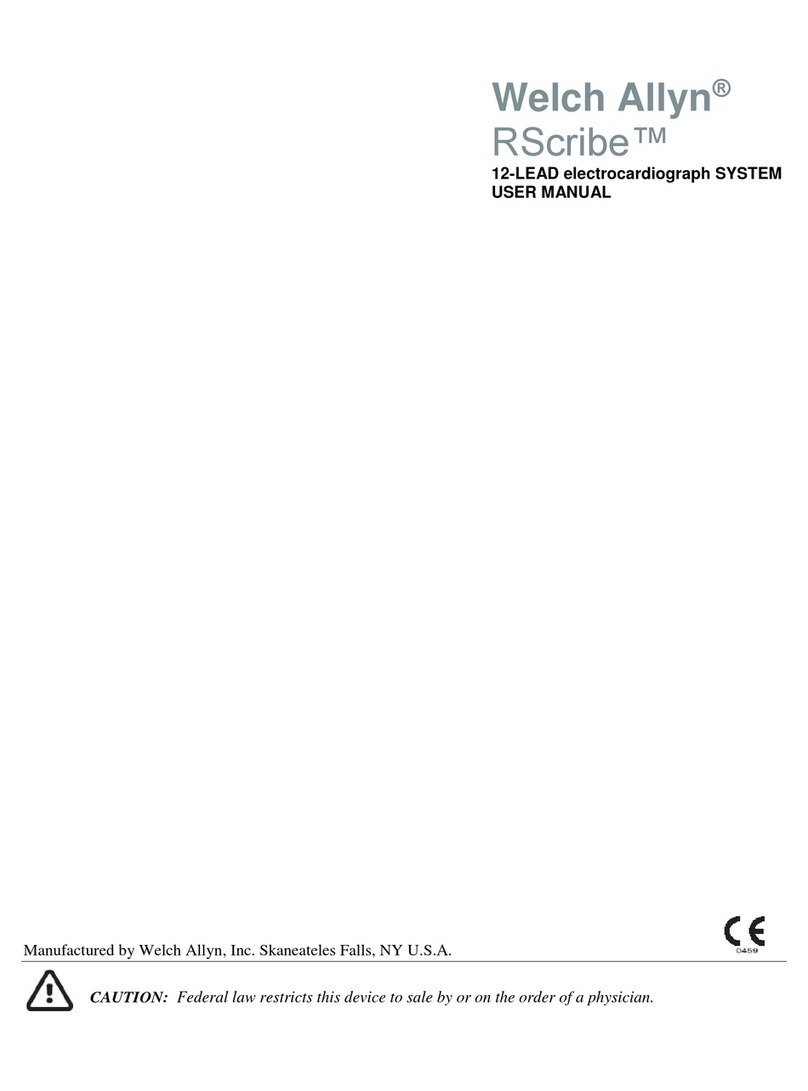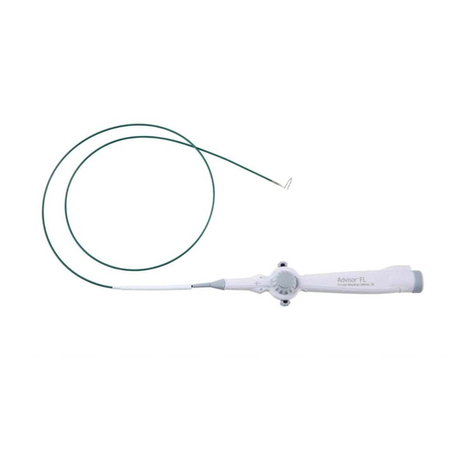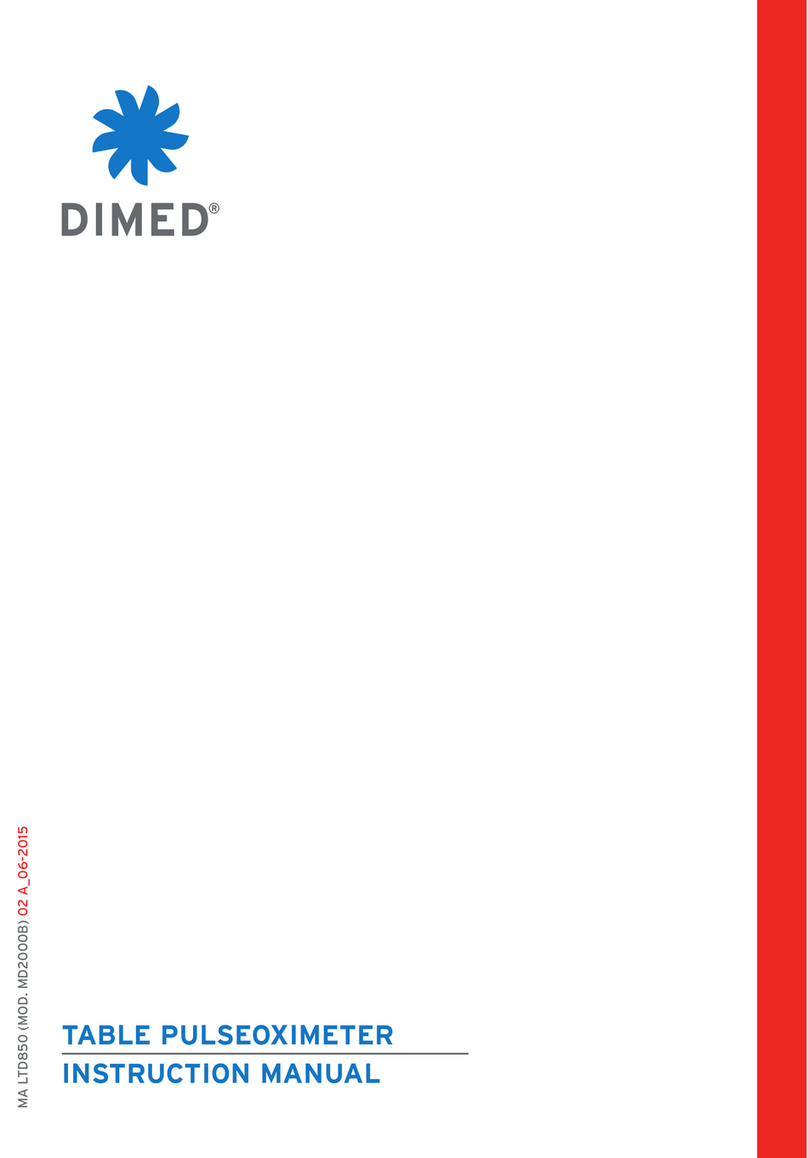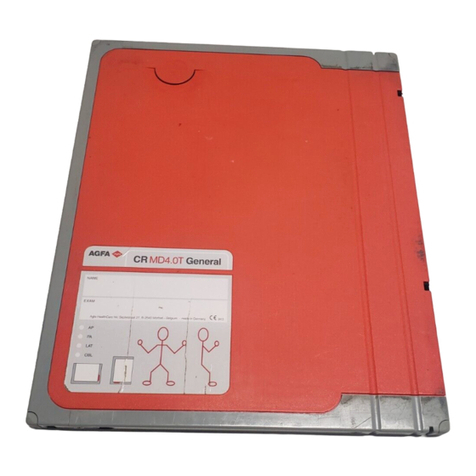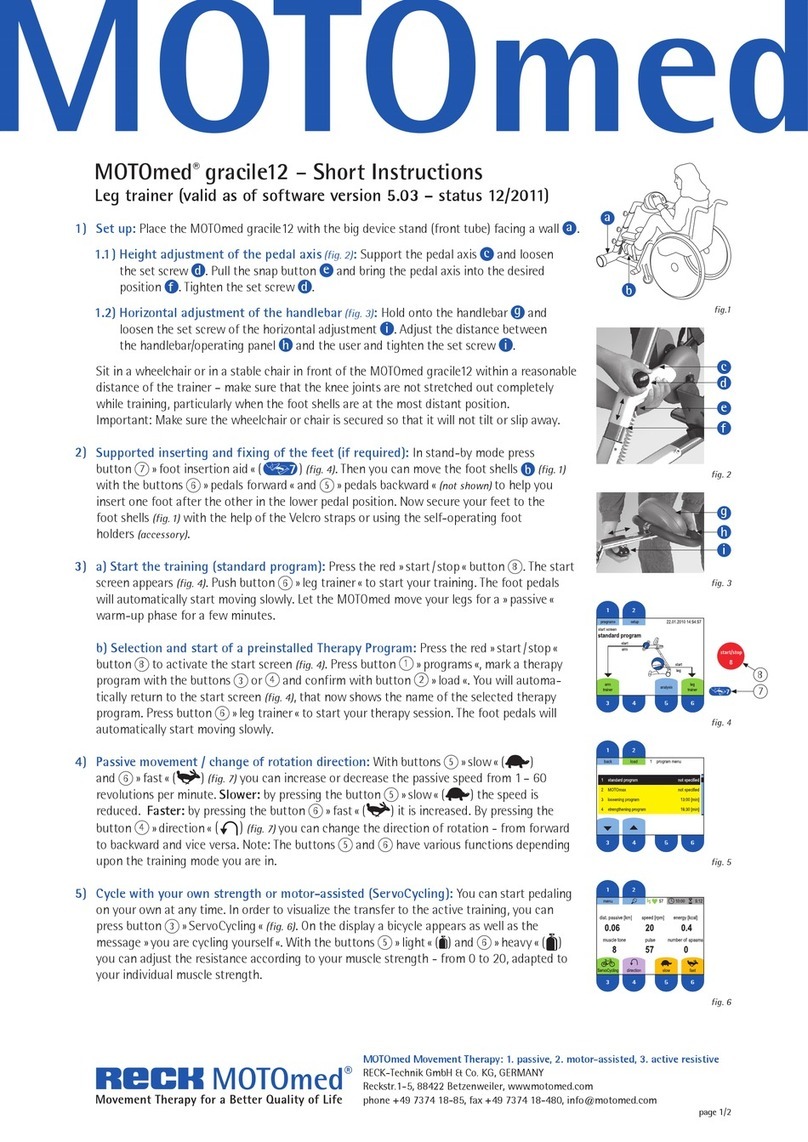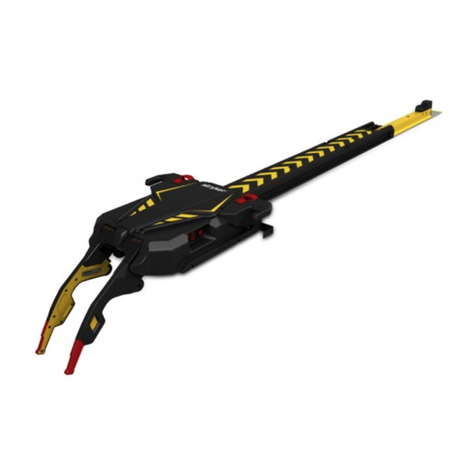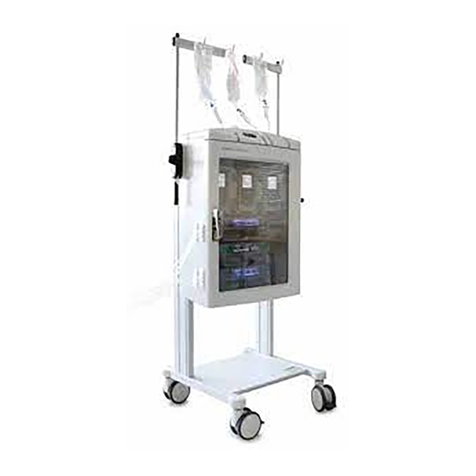BMC M1 Mini User manual

User Manual
Sleep Apnea Therapy Device
and Accessories
Auto CPAP System
M1 Mini
0123

M1 Mini User Manual
Table of Contents
1. Symbols ··················································································· 1
1.1 Control Buttons ······························································· 1
1.2 Device Symbols ······························································· 1
2. Warning, Caution and Important Tip ················································ 2
3. Intended Use············································································· 2
4. Contraindications ········································································ 3
5. Specifications ············································································ 4
6. Available Therapies ····································································· 6
7. Glossary ··················································································· 6
8. Model ······················································································ 7
9. Package Contents ······································································· 8
10. System Features ······································································· 9
11. First Time Setup ····································································· 10
11.1 Download LightTrip App software······································ 10
11.2 Placing the Device ························································ 10
11.3 Installing the Air Filter and Filter Cap ································· 11
11.4 Connecting to Power ····················································· 11
11.5 Assembling the Tubing and Mask ······································ 12
11.6 Using Oxygen with the Device·········································· 14
11.7 Establish Bluetooth connection········································· 14
11.8 Setting ······································································ 14
11.9 Starting Treatment························································ 15
12. Routine Use ··········································································· 15
12.1 Connecting the Tubing ··················································· 15
12.2 Adjusting the Tubing ····················································· 15
12.3 Turning on the Airflow ··················································· 15
12.4 Using the Ramp Function················································ 15
12.5 Turning the Device Off ··················································· 16
13. Navigating the Patient Menu ······················································ 16
13.1 Steps to Navigating the Patient Menu ································ 16
13.1.1 Accessing the setup interface ······························· 16
13.1.2 Setting and saving parameters ····························· 16
13.2 Options of the Patient Menu and Corresponding Descriptions ··· 16
13.2.1 Treatment setting ············································· 16
13.2.2 Accessories setting ············································ 17
14. Prompt ················································································· 18
15. Introduction of "Report"···························································· 19
16. Introduction of "More" ······························································ 19
17. Software upgrading·································································· 20

M1 Mini User Manual
18. Cleaning and Maintenance ························································· 20
18.1 Cleaning the Mask and Headgear······································ 21
18.2 Cleaning the Enclosure··················································· 21
18.3 Cleaning the Tubing ······················································ 21
18.4 Replacing the Air Filter··················································· 21
19. Traveling with the Device ·························································· 22
19.1 Traveling···································································· 22
19.2 Traveling by airplane ····················································· 22
20. Transferring the Device to Another Patient ····································· 23
21. Reordering ············································································ 23
22. Technical Support···································································· 23
23. Disposal················································································ 23
24. Troubleshooting ······································································ 24
24.1 Common Problems in Patients and Corresponding Solutions ····· 24
24.2 Common Problems in the Device and Corresponding Solutions · 26
25. EMC Requirements ·································································· 27
26. Limited Warranty····································································· 32

M1 Mini User Manual
1 / 32
1. Symbols
1.1 Control Buttons
Bluetooth Button
Start/Stop Button
1.2 Device Symbols
Follow Instructions for Use
Lot number
Operating Instructions
Manufacturer
Type BF Applied Part
(mask)
Manufacturing date
Class II (Double Insulated)
EC REP
Authorized
Representative in the
European Community
AC Power
European CE Declaration
of Conformity
DC Power
Bluetooth logo
IP22
≥12.5 mm Diameter,
Dripping (15º tilted)
Nonionizing radiation
Serial Number of the
Product
Logo of BMC Medical
Co., Ltd.
Aircraft use
CAUTION!
• The Bluetooth®word mark and logos are registered trademarks owned by Bluetooth SIG, Inc.
and any use of such marks by BMC is under license. Other trademarks and trade names are
those of their respective owners.

M1 Mini User Manual
2 / 32
2. Warning, Caution and Important Tip
WARNING!
Indicate the possibility of injury to the user or operator.
CAUTION!
Indicate the possibility of damage to the device.
IMPORTANT TIP!
Place emphasis on an operating characteristic.
Warnings, Cautions, and Important Tips appear throughout this manual as they apply.
3. Intended Use
The M1 Mini Auto CPAP system is a CPAP (Continuous Positive Airway Pressure) device
designed for the treatment of adults Obstructive Sleep Apnea (OSA) only, either in the hospital
or at home.
The device is to be used only on the instruction of a licensed health care professional. Your
home care provider will make the correct pressure settings according to your health care
professional’s prescription.
Several accessories are available to make your OSA treatment with the device as convenient
and comfortable as possible. To ensure that you receive the safe, effective therapy prescribed
for you, use only BMC accessories.
WARNINGS!
• The device is intended for adult use only.
• The device is not intended for life support.
• The instructions in this manual are not intended to supersede established medical protocols.
• Do not bring the device or accessories into a Magnetic Resonance (MR) environment as it
may cause unacceptable risk to the patient or damage to the device or MR medical devices.
The device and accessories have not been evaluated for safety in an MR environment.
• Do not use the device or accessories in an environment with electromagnetic equipment such
as CT scanners, Diathermy, RFID and electromagnetic security systems (metal detectors) as it
may cause unacceptable risk to the patient or damage to the device. Some electromagnetic
sources may not be apparent, if you notice any unexplained changes in the performance of the
device, if it is making unusual or harsh sounds, disconnect the power cord and discontinue use.
Contact your home care provider.

M1 Mini User Manual
3 / 32
CAUTION!
• The device is restricted to sale by or on the order of a physician.
IMPORTANT!
• Read and understand the entire user manual before operating this system. If you have any
questions concerning the use of this system, contact your home care provider or health care
professional.
• The pictures in the user manual are only for reference, if they are different from the material
object, the latter shall prevail.
4. Contraindications
Studies have shown that the following pre-existing conditions may contraindicate the use of
positive airway pressure therapy for some patients:
Absolute Contraindications: Pneumothorax, mediastinal emphysema; cerebrospinal fluid
leak, traumatic brain injury, or pneumocephalus; shock caused by a variety of conditions
before treatment; active epistaxis; upper gastrointestinal bleeding before treatment; coma or
impaired consciousness making the use of mask during therapy impossible; giant vocal fold
polyp, etc.
Relative Contraindications: Severe coronary heart disease complicated with left ventricular
failure, acute otitis media, excessive respiratory secretions and weak cough, weak
spontaneous breathing, nasal or oral tracheal intubation and tracheotomy, severe nasal
congestion caused by a variety of conditions, lung bullae, and allergies to breathing masks,
etc.
The following side effects may occur during treatment:
- Dryness of the mouth, nose and throat
- Abdominal bloating
- Ear or sinus discomfort
- Eye irritation
- Skin irritation due to the use of a mask
- Chest discomfort
IMPORTANT!
• An irregular sleep schedule, alcohol consumption, obesity, sleeping pills, or sedatives may
aggravate your symptoms.
• Please use the mask which meets ISO 17510: 2015 and ISO 18562 series standard.

M1 Mini User Manual
4 / 32
CAUTION!
• Contact your health care professional if symptoms of sleep apnea recur. Contact your health
care professional if you have any questions concerning your therapy.
5. Specifications
Device Size
Dimensions: 159 mm × 66 mm × 72 mm
Weight: < 400 g
Product Use, Transport and Storage
Operation Transport and Storage
Temperature: 5°C to 35°C (41˚F to 95˚F) -25°C to 70°C (-13˚F to 158˚F)
Humidity: ≤ 93% Non-condensing ≤93% Non-condensing
Atmospheric Pressure: 760 ~1060 hPa 760 ~1060 hPa
Mode of Operation
Continuous
Work Mode
CPAP, AutoCPAP
AC Power Consumption
100 - 240 V AC, 50 / 60 Hz, 1.0 A max
Main device input
19 V, 1.26 A
Type of Protection Against Electric Shock
Class II Equipment
Degree of Protection Against Electric Shock
Type BF Applied Part
Degree of Protection Against Ingress of Water
IP22
Pressure Range
4 to 20 hPa (in 0.5 hPa increments), ≤ 30 hPa under single fault conditions.
Pressure Display Accuracy
0 to 20 hPa,Margin of Error:± (0.5 hPa+4%)

M1 Mini User Manual
5 / 32
Static Pressure Stability
± 0.5 hPa
Ramp
The ramp time ranges from 0 to 60 minutes.
Sound Pressure Level
< 30 dB, when the device is working at the pressure of 10 hPa.
Sound Power Level
< 38 dB, when the device is working at the pressure of 10 hPa.
Maximum Flow
Test Pressures (hPa)
4
8
12
16
20
Measured Pressure at the
Patient Connection Port (hPa)
3
7
11
15
19
Average Flow at the Patient
Connection Port (L/min)
85
125
110
110
95
When the working pressure is set to the values listed in the table, the average
flow rate at the patient end should be greater than 80% of the corresponding
flow value in the table.
Air Tubing
Air tubing
Length
Inner diameter
Tubing
6 ft.(1.83 m)
15 mm
Tubing
6 ft.(1.83 m)
19 mm
The Form and the Dimensions of the Patient Connection Port
The 22 mm conical air outlet complies with ISO 5356-1.
Air filter
Filtration efficiency: > 20% for 10 micron
Material: Non-woven fabric and Polyester
Aircraft use
BMC confirms that the device meets the Federal Aviation Administration (FAA) requirements
(RTCA/DO-160, section 20, category T and section 21, category M) for all phases of air travel.
Bluetooth authentication information
Product name: Auto CPAP System
Model: M1 Mini
DID: D051679
QDID: 154506

M1 Mini User Manual
6 / 32
Bluetooth module
Technology used: Bluetooth
Connection types: GATT
Frequency: 2400 to 2483 MHz
Max RF power output: +4 dBm
Operating range: 10 m (Class 2)
6. Available Therapies
The device delivers the following therapies:
CPAP
–
Delivers Continuous Positive Airway Pressure; CPAP maintains a constant level of
pressure throughout the breathing cycle.
AutoCPAP
–
Delivers CPAP therapy and provides an air pressure no less than the prescribed
one based on the patient’s needs.
7. Glossary
Apnea
A condition marked by the cessation of spontaneous breathing.
AutoCPAP
Adjust CPAP pressure automatically to improve patient comfort based on monitoring of apnea
and snoring events.
Auto Off
When this feature is enabled, the device automatically discontinues therapy whenever the
mask is removed.
Auto On
With this feature, the device automatically initiates therapy when you breathe into the mask.
This feature is always enabled.
CPAP
Continuous Positive Airway Pressure.
LPM
Liters Per Minute.
OSA
Obstructive Sleep Apnea.

M1 Mini User Manual
7 / 32
Patient Menu
The display mode in which you can change patient-adjustable device settings, such as the
starting pressure for the Ramp feature.
Ramp
A feature that may increase patient comfort when therapy is started. It can reduce pressure
and then gradually increase the pressure to the prescription setting so the patient can fall
asleep more comfortably.
Reslex
A therapy feature that is enabled by you or your home care provider to provide pressure relief
during exhalation.
Standby State
The state of the device when power is applied but the airflow is turned off.
min
Means the time unit "minute".
h
Means the time unit "hour".
yy mm dd / mm dd yy / dd mm yy
Means the date.
8. Model
Model
Product Description
Product
Contents
Optional
Accessory 1
Optional
Accessory 2
Work
Mode
Maximum
Work
Pressure
(hPa)
M1 Mini
Main device,
Mini series
ventilator control
software
(LightTrip App)
Tubing
Mask
CPAP,
AutoCPAP
20

M1 Mini User Manual
8 / 32
9. Package Contents
After unpacking the system, make sure you have everything shown here:
No.
Articles
Qty.
Notes
1
Main Device
1
2
Tubing
1
Optional
3
Mask
1
Optional
4
Air Filter
2
5
Power Adapter
1
6
Storage bag
1
Optional
7
Carrying Case
1
Optional
8
Accompanying Documents
1
All parts and accessories are not made with natural rubber latex.
The product’s service life shall be five years if the use, maintenance, cleaning and disinfection
are in strict accordance with the User Manual.
According to the power adapter standards of different countries, different power adapters are
configured.
IMPORTANTS!
• If any of the above parts are missing, contact your home care provider.
• Contact your home care provider for additional information on the available accessories of
the device. When using optional accessories, always follow the instructions enclosed with the
accessories.
WARNING!
• The device should only be used with the mask and accessories manufactured or
recommended by BMC or with those recommended by your prescribing physician. The use of
inappropriate masks and accessories may affect the performance of the device and impair the
effectiveness of therapy.

M1 Mini User Manual
9 / 32
10. System Features
Device Status Light
Start/Stop Button
Bluetooth Button
Air Outlet
Fig. 10-1
Name
Function
Start/Stop Button
Press this button to Start / Stop delivering air.
The indicator light is white.
Bluetooth Button
Press this button to control Bluetooth status:
When Bluetooth is off, press this button to turn on the Bluetooth
function; when Bluetooth is on, double click this button to turn
off the Bluetooth function.
The indicator light is blue.
Air Outlet
Deliver pressurized air; connected to the tube.
Device Status Light
This light is white in normal state and orange in case of prompt
message.
Filter Cap
(Air Inlet)
Fig. 10-2
Name
Function
Filter Cap
(Air Inlet)
Place the cap on the air filter, which is used to filter dust and
pollen in the air entering the device.

M1 Mini User Manual
10 / 32
DC Inlet
Fig. 10-3
Name
Function
DC Inlet
An inlet for the DC power supply.
11. First Time Setup
11.1 Download LightTrip App software
Search and download LightTrip App in the App store.
Support Android platform and IOS platform.
11.2 Placing the Device
Place the device on a firm, flat surface. The anti-skid pad installed at the bottom of the device
is convenient for fixing the device.
WARNINGS!
• If the device has been dropped or mishandled, if the enclosure is broken, or if water has
entered the enclosure, disconnect the power cord and discontinue use. Contact your home
care provider immediately.
• If the room temperature is warmer than 95°F (35°C), the airflow produced by the device may
exceed 109.4°F (43°C). The room temperature must be kept below 95°F (35°C) while the
patient uses the device.
CAUTIONS!
• If the device has been exposed to either very hot or very cold temperatures, allow it to adjust
to room temperature (20°C, approximately 2 hours) before beginning setup.
• Make sure the device is away from any heating or cooling equipment (e.g., forced air vents,
radiators, air conditioners).
• The device is not suitable for use in high humidity environments. Make sure that no water
enters the device.

M1 Mini User Manual
11 / 32
• Make sure that bedding, curtains, or other items are not blocking the filter or vents of the
device.
• Keep pets, pests or children away from the device and avoid small objects being inhaled or
swallowed.
• To avoid explosion, the device must not be used in the presence of flammable gases (e.g.
anesthetics).
• Tobacco smoke may cause tar build-up within the device, leading to the malfunctioning of the
device.
• Air must flow freely around the device for it to work properly.
11.3 Installing the Air Filter and Filter Cap
(1) Attach the air filter to the filter cap, as shown in Fig. 11-1.
Filter Cap
Air Filter
Fig. 11-1
(2) Install the filter cap containing the air filter to the main device, as shown in Fig. 11-2.
Fig. 11-2
CAUTION!
• The air filter must be in place when the device is operating.
11.4 Connecting to Power
(1) Insert the plug of the power adapter into the DC Inlet of the device;
(2) Plug the other end of the power adapter into the power outlet.

M1 Mini User Manual
12 / 32
DC Inlet
Power Adapter
Fig. 11-3
WARNINGS!
• The device is powered on for use when the power adapter is connected. The Button
turns the blower On / Off.
• Use of the device at an AC voltage beyond the stated range (see Section 5 "AC Power
Consumption") may damage the device or cause device failure.
• Do not place the device where it is difficult to disconnect the power supply.
• Do not stack too long cables or tubing at the head of the bed, which may entangle the head
or neck of the patient during sleeping.
CAUTION!
• Inspect the cord of power adapter often for any signs of damage. Replace a damaged power
adapter immediately.
IMPORTANT!
• After interruption and restoration of the power supply, the device will restore its
pre-interruption working status automatically.
11.5 Assembling the Tubing and Mask
(1) Connect one end of the tube to the air outlet of the main device, as shown in Fig. 11-4.

M1 Mini User Manual
13 / 32
Air outlet
Tubing
Fig. 11-4
(2) Connect the other end of the tube to the mask according to the user manual for the mask.
Wear the mask.
WARNINGS!
• If multiple persons are going to use the device (e.g., rental devices), a low-resistance, main
flow bacteria filter should be installed in-line between the device and tube. Pressures must be
verified by your home care provider when alternate or optional accessories are in place.
• If you are using a mask with a built-in exhalation port, connect the mask’s connector to the
tube.
• If you are using a mask with a separate exhalation port, connect the tube to the exhalation
port. Position the exhalation port so that the vented air is blowing away from your face.
Connect the mask’s connector to the exhalation port.
• If you are using a full-face mask (a mask covering both your mouth and nose), the mask
must be equipped with a safety (entrainment) valve.
• In order to minimize the risk of CO2rebreathing, the patient should observe the following
instructions:
- Use the accompanying tube and mask provided by BMC.
- Do not wear the mask for more than a few minutes while the device is not operating.
- Use only masks with vent holes. Do not block or try to seal the vent holes in the exhalation
port.
• Failure to use a mask or accessory that permits spontaneous breathing can cause
asphyxiation.
• Failure to use a mask or accessory that minimizes rebreathing of carbon dioxide or permits
spontaneous breathing can cause asphyxiation.

M1 Mini User Manual
14 / 32
11.6 Using Oxygen with the Device
Oxygen may be added at the mask connection. Please observe the instructions listed below
when using oxygen with the device.
WARNINGS!
• Connect the oxygen tube to the oxygen inlet of the mask.
• The oxygen supply must comply with the local regulations for medical oxygen.
• Turn on the device before turning on the oxygen. Turn off the oxygen before turning off the
device. Explanation of Warning: When the device is turned off, but the oxygen flow still exists,
oxygen may accumulate within the device's enclosure and pose a fire hazard. Turning off the
oxygen before turning off the device will prevent oxygen accumulation in the device and
reduce the risk of fire. This warning applies to most CPAP devices.
• Oxygen supports combustion. Keep the device and the oxygen container away from heat,
open flames, any oily substances, or other sources of ignition. DO NOT smoke in the area near
M1 Mini or the oxygen container.
• Sources of oxygen should be located more than 1 m from the device.
• When using oxygen with this system, a Pressure Valve must be placed in-line with the patient
circuit between the device and the oxygen source. The pressure valve helps prevent the
backflow of oxygen from the patient circuit into the device when the unit is off. Failure to use
the pressure valve could result in a fire hazard.
• Do not connect the device to an unregulated or high pressure oxygen source. The pressure of
oxygen source does not exceed the work pressure of the device.
11.7 Establish Bluetooth connection
Connect the device to a power supply. Press the Bluetooth button on the main device and the
Bluetooth indicator light flashes. Then open the LightTrip App, click the Bluetooth icon, and
start to search the device, select the device (name is device serial number, please check the
device nameplate information) in the device list for Bluetooth connection. If the Bluetooth is
connected successfully, the Bluetooth working status light of the main device will be kept on.
11.8 Setting
Click "Settings" and "Accessories" in the LightTrip App to enter the corresponding Settings
interface respectively. See "13. Navigating the Patient Menu" in this manual for detailed of the
interface.

M1 Mini User Manual
15 / 32
11.9 Starting Treatment
Press the Start/Stop Button or click on the icon in the LightTrip App, the device
will start delivering air.
WARNINGS!
• Be sure to follow your physician’s instructions on adjusting the settings. To order any
accessories not included with the device, contact your equipment supplier.
• DO NOT connect any ancillary equipment to the device unless recommended by BMC or your
physician. If you suffer from chest discomfort, shortness of breath, stomach bloating, or severe
headache when using the device, contract your physician or qualified medical personnel
immediately.
12. Routine Use
12.1 Connecting the Tubing
Connect the power adapter and tubing properly according to the instructions in the First Time
Setup (Chapter 11). Connect the mask and headgear according to the user manual for the
mask.
CAUTION!
• Before each use, examine the tubing for any damage or debris. If necessary, clean the tube
to remove the debris. Replace any damaged tube. Make sure that the mask does not leak.
12.2 Adjusting the Tubing
Lie down on your bed, and adjust the tubing so it is free to move if you turn during sleep.
Adjust the mask and headgear until you have a comfortable fit and until there are no airflow
leaks around the mask.
12.3 Turning on the Airflow
Press the Start / Stop Button or click on the icon in the LightTrip App to turn on
the airflow. The LightTrip App will display treatment pressure and other information.
12.4 Using the Ramp Function
When the Ramp function is turned on, the pressure will gradually rise to the prescribed
treatment pressure according to the preset ramp time from the initial pressure, so as to make
the patient fall asleep easily. The LightTrip App displays a real-time countdown of the
remaining ramp time in minutes.
CAUTION!
• The ramp feature is not prescribed for all users.

M1 Mini User Manual
16 / 32
12.5 Turning the Device Off
Take off the mask and headgear, press the Start / Stop Button or click on the icon
in the LightTrip App, and the device will stop delivering air. Disconnect the power adapter from
the power outlet to power off the device.
13. Navigating the Patient Menu
13.1 Steps to Navigating the Patient Menu
13.1.1 Accessing the setup interface
Connect the power adapter properly. Turn on the device and LightTrip App for Bluetooth
connection. After the Bluetooth connection is successful, click "Settings" and "Accessories" to
enter the corresponding parameter setting interface.
13.1.2 Setting and saving parameters
In the parameter setting interface, you can set the parameters as required. After setting the
parameters, you need to save them, and the parameter setting is completed.
13.2 Options of the Patient Menu and Corresponding Descriptions
13.2.1 Treatment setting
Option
Range
Description
Ramp
Time
0 ~60
minutes/
Auto
In order to increase comfort and help the patient fall asleep
easily, the pressure can increase gradually, when the Ramp
feature is enabled. The ramp time during which the initial
pressure rises to the prescribed treatment pressure can be
adjusted. The numbering increases or decreases by five
minutes. The LightTrip App displays a real-time countdown
of the remaining ramp time in minutes.
Reslex
Off/1/2/3
This feature enables the device to automatically reduce the
treatment pressure when the patient exhales, so as to make
the user more comfortable. The higher the numbering is, the
more pressure the device reduces. "Off" means this feature
is disabled.
Auto
on
On/Off
If this function is turned on, the device will automatically
start delivering air under preset pressure after the patient
puts on a breathing mask and takes several deep breaths.
Click to select "On" or "Off".
Auto
off
On/Off
If this function is turned on, the device will automatically
stop delivering air and shut down after the patient takes off
the breathing mask. Click to select "On" or "Off".
Tubing
Type
22 mm/15 mm
There are two types of tubing available. Click to select "22
mm" or "15 mm".
Mask
Type
Full Face/
Nasal/
Pillow/
Other
There are three mask types available, namely Full Face
(full-face mask), Nasal (nasal mask), and Pillow (nasal pillow
mask). But the patient can choose other suitable masks as
well. When selecting masks other than the above three
types of BMC masks, the patient can identify the masks as
other.

M1 Mini User Manual
17 / 32
Moisture
Exchanger
Type
None/
Ordinary
edition/
Enhanced
edition
It can be selected according to the moisture exchanger type
of mask.
13.2.2 Accessories setting
Option
Range
Description
Air Filter
Off/7 days/14 days/
21 days/30 days/60 days/
90 days
Set the air filter remind cycle, it will remind
the user once the cycle is over.
Mask
Off/30 days ~720 days
Set the mask remind cycle, it will remind
the user once the cycle is over. The setting
increment is 30 days.
Tubing
Off/30 days ~720 days
Set the tubing remind cycle, it will remind
the user once the cycle is over. The setting
increment is 30 days.
Moisture
Exchanger
Off/7 days/14 days/
21 days/28 days
Set the moisture exchanger remind cycle,
it will remind the user once the cycle is
over. The setting increment is 7 days
Days since
last
maintenance
Off/180 days/360 days
Set the cleaning and maintenance remind
cycle, it will remind the user once the cycle
is over.
Other manuals for M1 Mini
1
Table of contents
Other BMC Medical Equipment manuals
